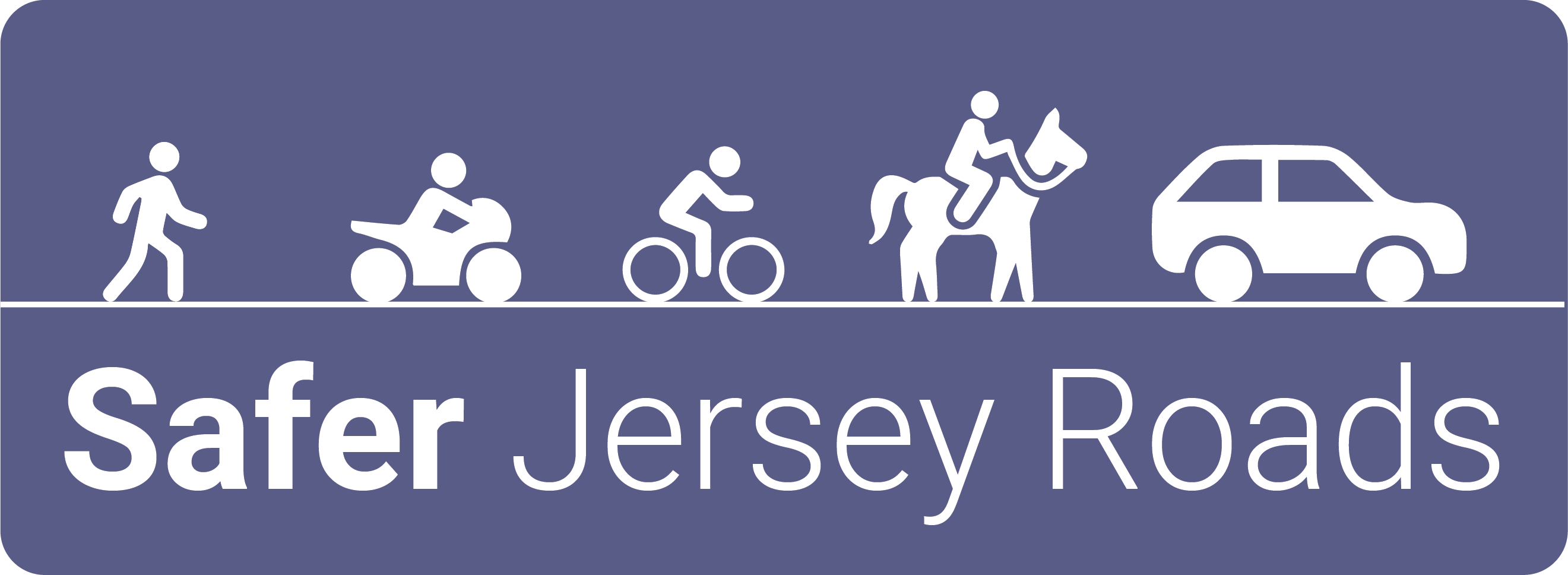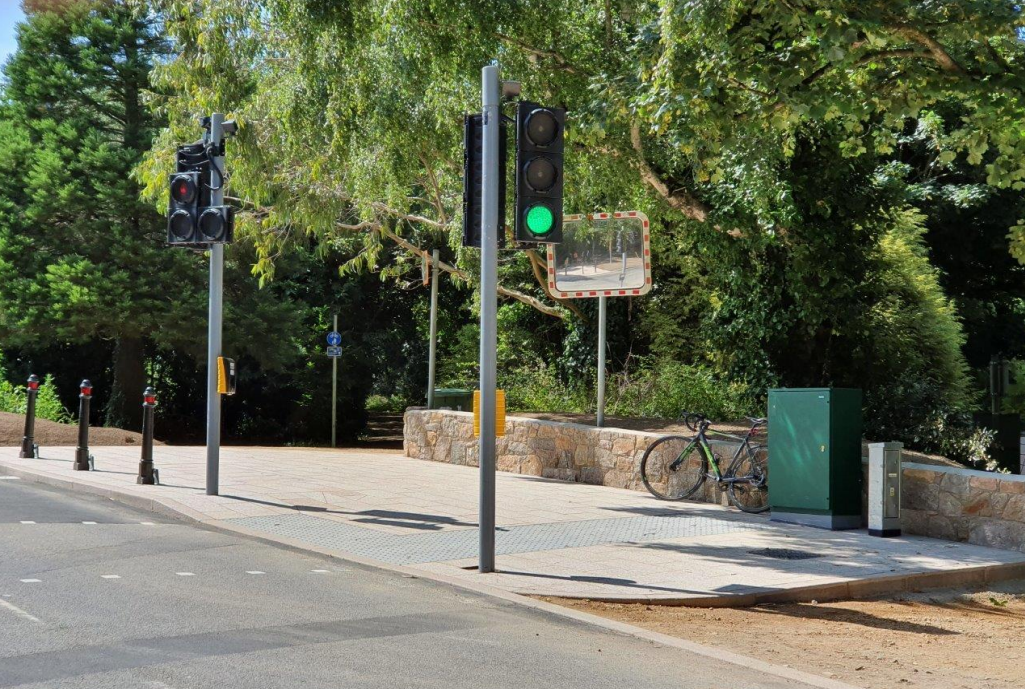Road Safety for Older Children
As children grow older, their road safety needs evolve, requiring a deeper understanding of the complexities they may encounter. This guide provides essential advice and practical tips to help older children navigate roads safely. From understanding traffic rules and safe cycling practices to the importance of seat belt usage and booster seats, this guide aims to develop advanced safety awareness. Additionally, it highlights the risks of distractions and the critical role of visibility in staying safe. By focusing on these key areas, we can help older children build the confidence and skills necessary for responsible road use as they gain more independence.
Safe Cycling Practices
If you cycle, it’s important to follow some basic safety practices. Always wear a helmet—it’s not just a good idea, it’s the law for those aged 13 and under when riding a bike on roads or cycle tracks. Use hand signals to let drivers and other cyclists know when you’re turning, and stick to bike lanes when they’re available. Always stay alert and aware of what’s happening around you while cycling. To better your knowledge on cycle safety take our Cycling Safety Test that can be found here.
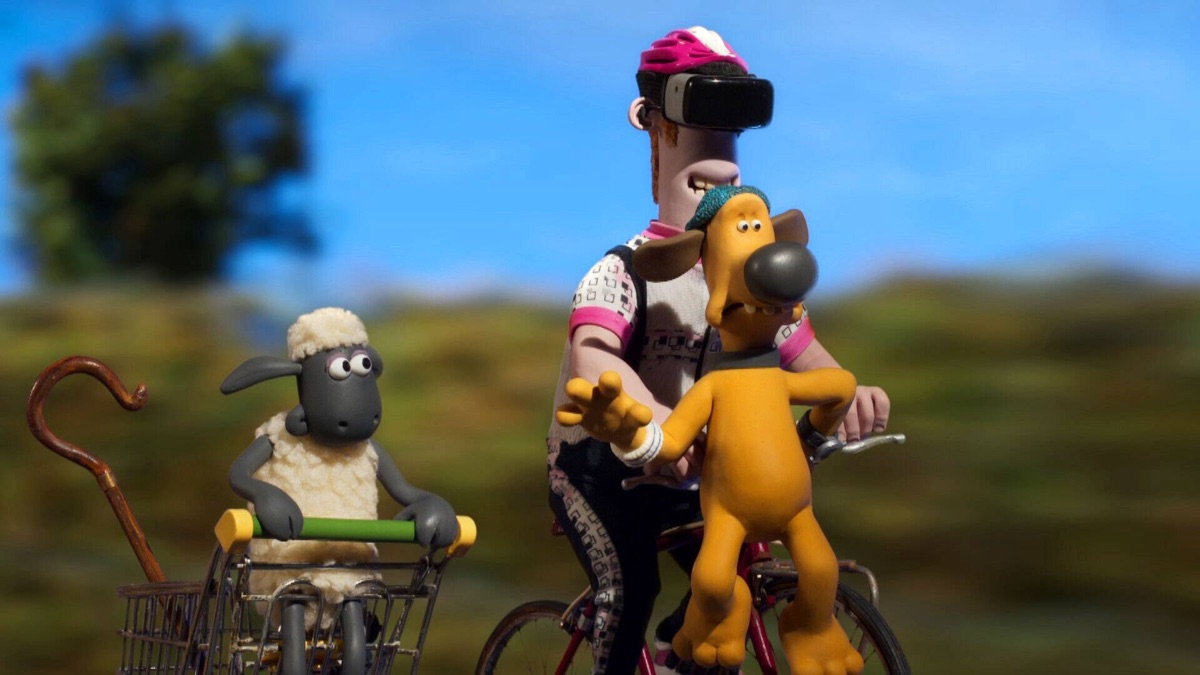
Avoiding Distractions
Distractions like using a mobile phone, listening to music with headphones, or playing games while walking or cycling can be dangerous. Staying focused and alert is key to staying safe when you’re near or on the road. It’s important to keep your attention on your surroundings to avoid any potential hazards.
Advanced Looking and Listening Skills
As you get older, it’s important to sharpen your looking and listening skills. Before crossing any road, always look left, right, and then left again. Listen carefully for any traffic sounds that might indicate a vehicle is approaching. Try to make eye contact with drivers before crossing in front of them, and be extra cautious around large vehicles that might have blind spots.


Avoiding Distractions
Distractions like using a mobile phone, listening to music with headphones, or playing games while walking or cycling can be dangerous. Staying focused and alert is key to staying safe when you’re near or on the road. It’s important to keep your attention on your surroundings to avoid any potential hazards.
Advanced Looking and Listening Skills
As you get older, it’s important to sharpen your looking and listening skills. Before crossing any road, always look left, right, and then left again. Listen carefully for any traffic sounds that might indicate a vehicle is approaching. Try to make eye contact with drivers before crossing in front of them, and be extra cautious around large vehicles that might have blind spots.

Visibility and Clothing
Wearing bright or reflective clothing is a simple but effective way to make sure you’re seen by drivers, especially in poor weather conditions or at night. Consider using reflective armbands, jackets, or backpacks to enhance your visibility. Being easily seen by others can prevent accidents and keep you safe. More information on how to be safe and seen can be found here.
Walking on Country Roads
When you’re walking on country roads in Jersey, it’s crucial to walk on the right side of the road, facing oncoming traffic. This way, you can see vehicles as they approach and react quickly if needed.
Make sure to stay as close to the edge as possible, and use any available verge to keep a safe distance from passing cars. If you’re walking at night, it’s especially important to carry a source of light, like a flashlight or wear reflective gear, since there may be no street lighting. This helps drivers see you from a distance and ensures you can see where you’re going.

Visibility and Clothing
Wearing bright or reflective clothing is a simple but effective way to make sure you’re seen by drivers, especially in poor weather conditions or at night. Consider using reflective armbands, jackets, or backpacks to enhance your visibility. Being easily seen by others can prevent accidents and keep you safe. More information on how to be safe and seen can be found here.
Walking on Country Roads
When you’re walking on country roads in Jersey, it’s crucial to walk on the right side of the road, facing oncoming traffic. This way, you can see vehicles as they approach and react quickly if needed.
Make sure to stay as close to the edge as possible, and use any available verge to keep a safe distance from passing cars. If you’re walking at night, it’s especially important to carry a source of light, like a flashlight or wear reflective gear, since there may be no street lighting. This helps drivers see you from a distance and ensures you can see where you’re going.

Safe Crossing Practices
Knowing where and how to cross the road safely is important. Use pedestrian crossings, zebra crossings, and traffic light crossings whenever possible.
Below are different types of crossing that you will come across in Jersey.
Key Features:
- Zebra crossings are marked by alternating black and white stripes on the road and often have flashing amber beacons on either side.
- There are no traffic lights at zebra crossings; instead, they rely on drivers to stop for pedestrians.
How to Use:
- Pedestrians should wait at the edge of the crossing and make sure oncoming vehicles are slowing down or have stopped before stepping onto the crossing.
- Once on the crossing, pedestrians have priority, and vehicles must stop.
Priority:
- Pedestrians have priority. Drivers are required by law to stop when someone is on the crossing.
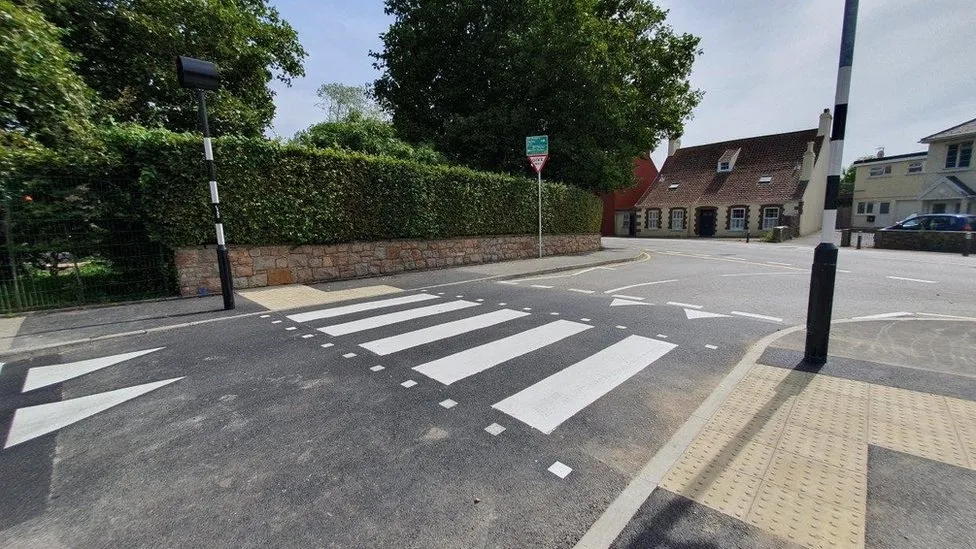
Key Features:
- Traffic light crossings, also known as pelican crossings, are controlled by traffic lights specifically for pedestrians.
- There is a button that pedestrians can press to activate the traffic lights, which will eventually turn red for vehicles and green for pedestrians.
How to Use:
- Pedestrians press the button and wait for the green man signal, which indicates it is safe to cross.
- Vehicles must stop when the light is red, and pedestrians should cross quickly and safely while the green man is illuminated.
Priority:
- Pedestrians have priority only when the pedestrian light is green. Vehicles must stop at the red light.
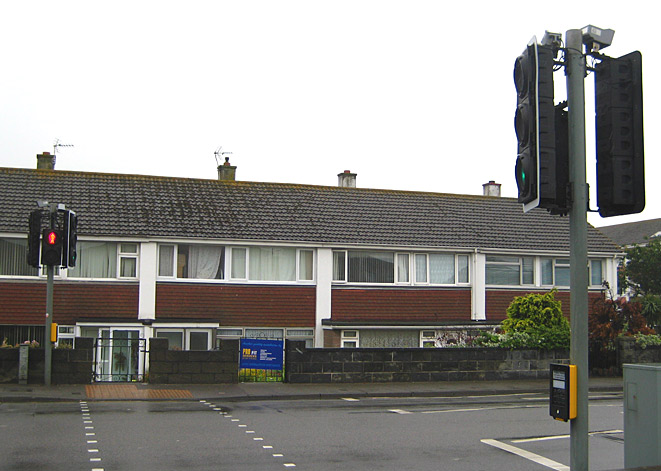
Key Features:
- Toucan crossings are designed for both pedestrians and cyclists, allowing both to cross together.
- These crossings are controlled by traffic lights, similar to pelican crossings, with a push button to activate the lights.
- There is no need to dismount from your bicycle when using a toucan crossing.
How to Use:
- Pedestrians and cyclists press the button and wait for the green signal, which indicates it is safe to cross.
- The crossing has a combined signal for both pedestrians (green man) and cyclists (green bicycle).
- Vehicles must stop when the light is red, and pedestrians and cyclists can cross safely.
Priority:
- Pedestrians and cyclists have priority when the lights show the green signal. Vehicles must stop at the red light.
Key Features:
- Pedestrian crossings with road islands are typically found on busy roads and are marked by a central refuge or island in the middle of the road.
- These crossings may or may not be marked with zebra stripes and are usually not controlled by traffic lights.
How to Use:
- Pedestrians should cross one half of the road at a time, using the island as a safe place to pause and check for traffic before crossing the next half.
- Pedestrians should wait until it is safe to cross each half of the road, as drivers are not required to stop unless the crossing is marked with zebra stripes.
Priority:
- If the crossing is unmarked (no zebra stripes), vehicles have priority, and pedestrians must wait until the road is clear to cross. If marked with zebra stripes, pedestrians have priority on the crossing, and vehicles must stop.
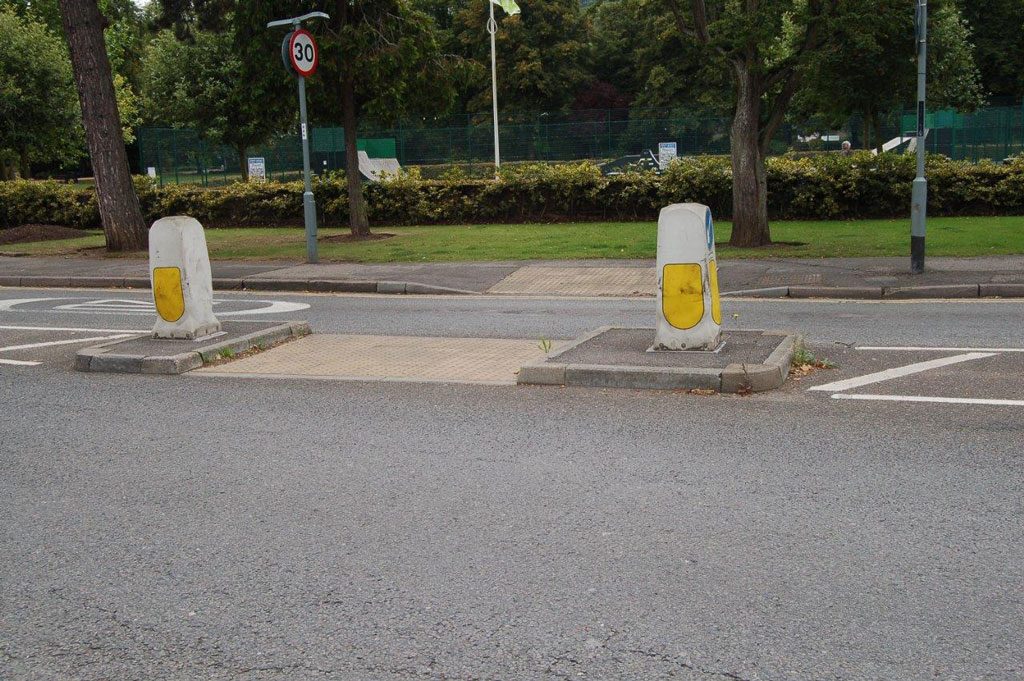
Dealing with Emergencies
It’s important to know what to do in an emergency. If someone is injured, you should know how to call for help and what information to provide. If you find yourself in an emergency situation, dial 999 immediately to contact emergency services. Staying calm and following instructions from the emergency personnel can make a big difference in how quickly help arrives and how the situation is handled.
Booster Seats and Child Restraints
Under Jersey law, children must be appropriately secured in a vehicle to ensure their safety:
- Children under 3 years old: Must use an appropriate child restraint
- Children aged 3 to 11 years: Should use a child restraint if available, if a child restraint is not available, they must wear an adult seat belt
- Children aged 12 years or older or over 135cm tall: Must wear an adult seat belt
More information on this can be found here.
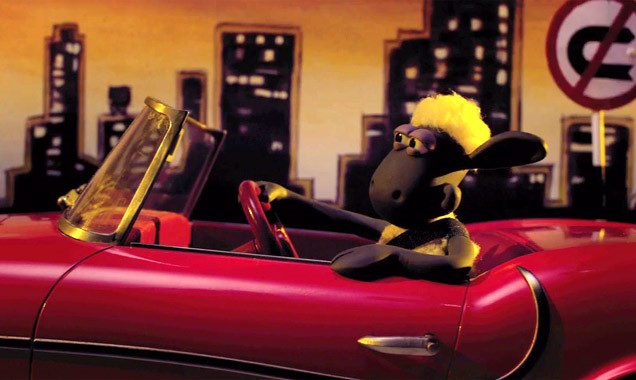

Dealing with Emergencies
It’s important to know what to do in an emergency. If someone is injured, you should know how to call for help and what information to provide. If you find yourself in an emergency situation, dial 999 immediately to contact emergency services. Staying calm and following instructions from the emergency personnel can make a big difference in how quickly help arrives and how the situation is handled.
Booster Seats and Child Restraints
Under Jersey law, children must be appropriately secured in a vehicle to ensure their safety:
- Children under 3 years old: Must use an appropriate child restraint
- Children aged 3 to 11 years: Should use a child restraint if available, if a child restraint is not available, they must wear an adult seat belt
- Children aged 12 years or older or over 135cm tall: Must wear an adult seat belt
More information on this can be found here.

